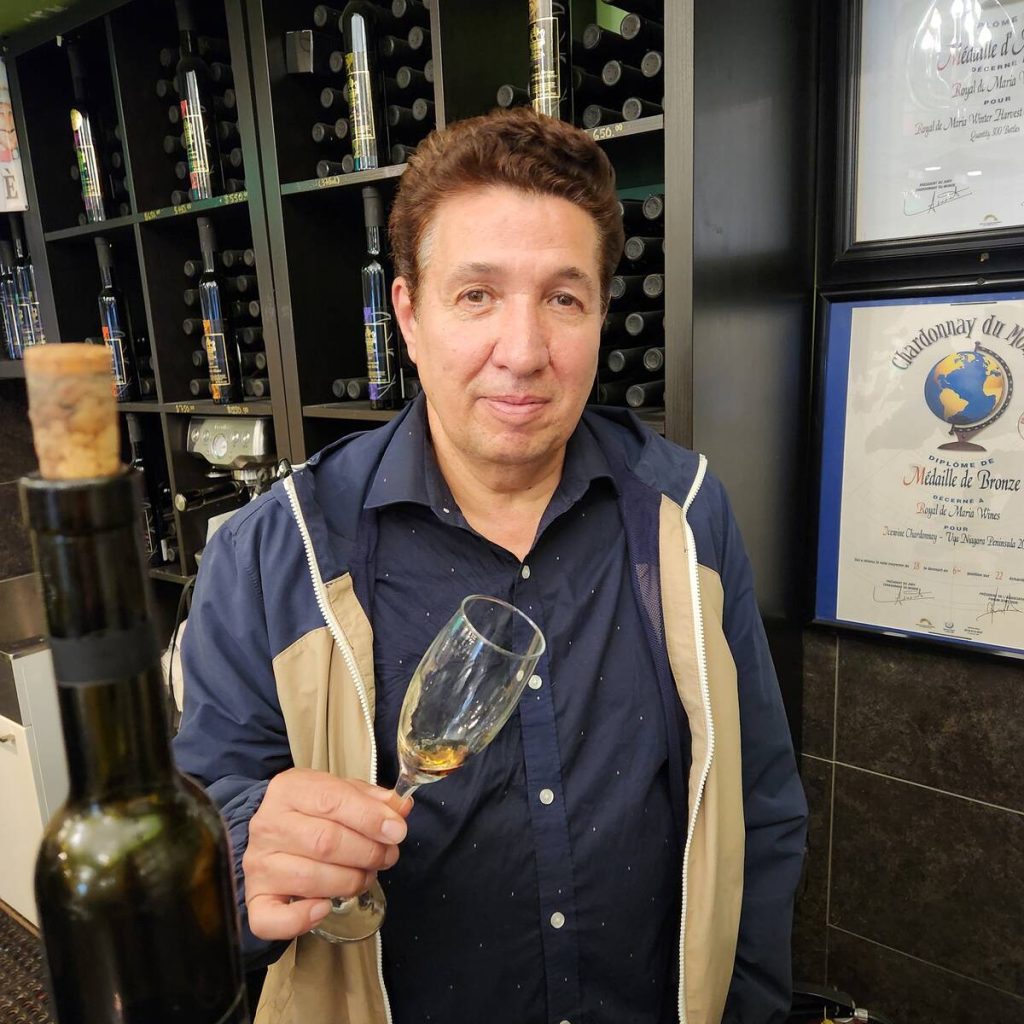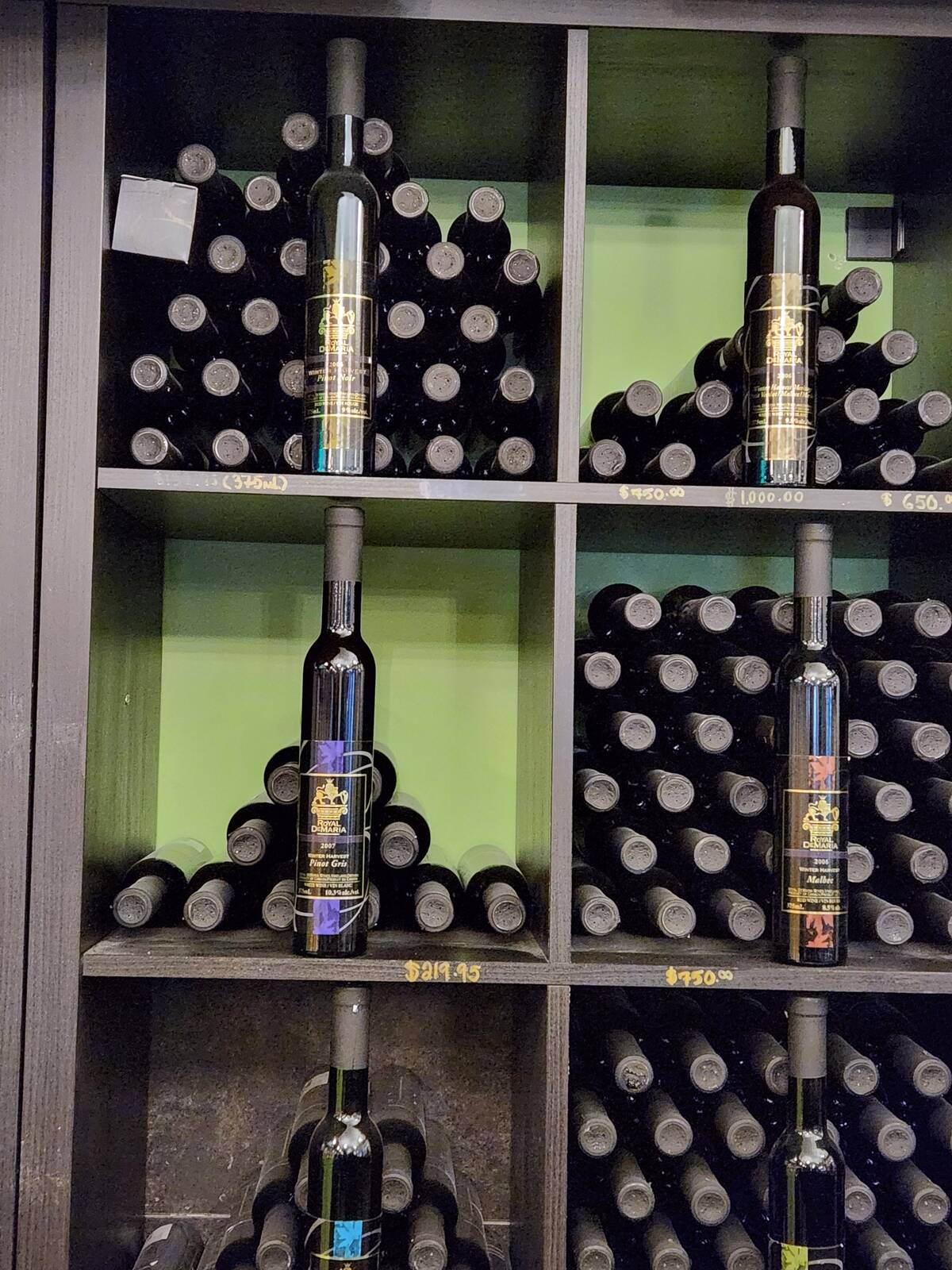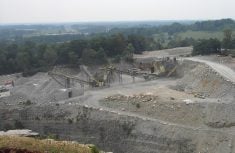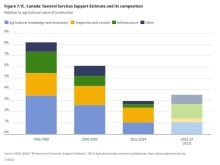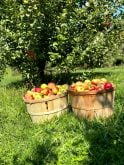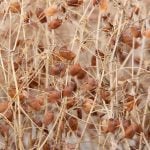With icewine dubbed as Canada’s ‘liquid gold’ and his shelves lined with gold medals, Joseph DeMaria’s journey as a reimagined icewine maker reads like a vintner’s version of striking gold.
“I was a hairdresser in Toronto who took a chance on a vineyard,” DeMaria said.
That was 1997, and within his first year of purchasing the land in Beamsville, Ont. DeMaria had harvested 100 tonnes of vidal and riesling grapes in December. He sold most of the harvested juice to a local winery, but was left with 5,000 litres of juice that he didn’t know what to do with.
“So, I bought a wine making for dummies book and winged it.”
A lot of mistakes were made during that first process that helped DeMaria develop his wine formula, but that’s how Royal DeMaria was born – and how the winery quickly established itself as “Canada’s Icewine Specialist.”
The result of DeMaria’s self-taught approach in his first attempt at making icewine that winter delivered a batch that surprised everyone, including himself, as well as his neighbours and the industry. Continuing with his ‘take a chance’ attitude, he entered the icewine into VinExpo France, a renowned global wine competition the following year and took home a hat trick, winning gold, silver and bronze awards.
Since then, Royal DeMaria winery has broken eight international wine records by following the same method and technique DeMaria used when experimenting the creation of his first batch of icewine.
Building a Dream
“I always work with a vision,” said DeMaria. “I take chances along the way, and I like to grow slowly, but know and gauge where I want to be.”
DeMaria grows 13 varieties of grapes on his vineyard that produce a large selection of icewines. In fact, the winery produces the largest portfolio of Canadian icewines and winter harvest icewines that includes varieties like vidal, gewurztraminer, cabernet sauvignon, merlot, shiraz, chardonnay, sauvignon blanc, pinot noir, pinot, blanc and pinot gris.
Like most of his wine making neighbours in the Niagara region, fluctuating weather patterns continue to impact DeMaria’s grape production and yield. Warmer winters are creating more challenges, especially when it comes to harvesting, because frozen grapes must be handpicked or machine picked when temperatures dip to -8 C or lower and pressed immediately to produce icewine.
Spring frosts and changing moisture patterns, including variable rainfall and snow loads, have increased the vulnerability of the Niagara region vineyard, creating new challenges that DeMaria has managed to navigate in recent years.
“We’re managing these variabilities by changing our farming practices,” he said. “It’s been working for the most part, but we need to continually adapt to weather changes to remain sustainable.”
Pouring into the Future
Over the years, DeMaria has expanded his winery to include an on-site production facility, storefront, Italian restaurant, Paninoteca, and a bed and breakfast. DeMaria continues to rack up international awards and accolades, including producing the most expensive bottle of Royal DeMaria 2000 Chardonnay icewine in the world. It attracted a Saudi Arabian who purchased a bottle priced at $30.000.
The winery’s reputation even reached royalty when Queen Elizabeth II requested six bottles of Royal DeMaria icewine during her jubilee visit to Canada in 2002. Even celebrities have sampled DeMaria’s world-renowned status, including Sir Richard Branson, who visited the winery to purchase seven bottles of icewine.
Despite the global recognition and attention DeMaria has earned, most of his icewine is sold in Canada and the United States. He’s relied on word of mouth to market his wines so far but is shifting his approach to a co-ordinated marketing effort this year to focus on enhancing his presence locally in Ontario and Canada. Thanks to growing demand for wine at his on-site restaurant, DeMaria has also expanded his wine production beyond icewine to include red and white wines that pair nicely with a meal at the winery.
“Our winery is located in the heart of Niagara wine country and is known as a go-to place and a must to visit to experience icewine,” said DeMaria.
DeMaria expects a surge of visitors from the U.S. during the busy summer season in the Niagara winery region, fueled by the favourable exchange rate.
“Americans love to visit our area to enjoy the hospitality and wine that our region produces,” he said.
DeMaria also pointed out the growing demand for housing and short-term rentals in the area as opportunities he looks forward to leveraging this year as he expands his bed and breakfast and food service offering.
“We’ve had a lot of sales support from local food movements and wine exports that has driven demand for icewine and local regular wines over the years,” he said, explaining that by 2030, the industry aims to create more than 40,000 direct and indirect jobs, attract three million annual visitors to Ontario wine regions, and plant four million new vines.
He also noted this growth will need to be supported by a 75 per cent increase in capital investment and said “there’s a lot of potential here.”
DeMaria takes pride in his self-taught approach to winemaking. He openly acknowledges the many mistakes he’s made along the way but credits his creativity and perseverance for rising to become one of the leading icewine producers in the Canada — and on the world stage.
